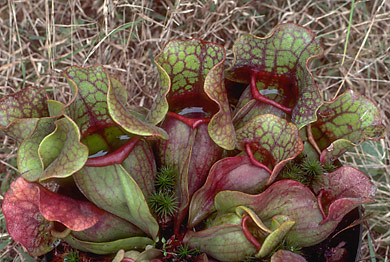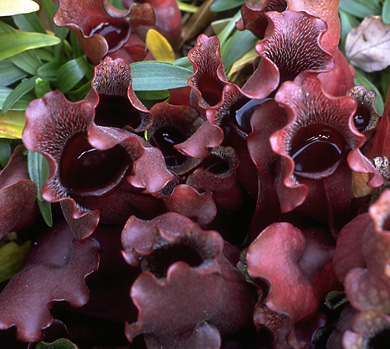
Above, the southern form of S. purpurea, subspecies venosa.
This variety was previously called S. purpurea subspecies venosa variety burkii, by Wherry in honor of a horticulturist, Louis Burk, who was growing them. (D. Schnell later gave a more formal description.)These are native primarily to Alabama. The pitcher lip and overall pitcher is fatter. The flower typically has pink petals and white to pale green female parts (stigma, style, ovary).
Most of the native habitats of this plant have been destroyed by human activity.
